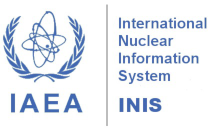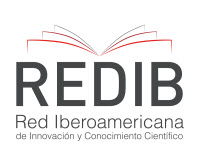Common onion extract (Allium cepa): radioprotective or radiosensitizing?
DOI:
https://doi.org/10.15392/2319-0612.2025.2921Keywords:
radioprotectors, antioxidant, micronucleus, allium cepaAbstract
Currently, ionizing radiation has been used on a large scale in different areas of knowledge. However, despite the existence of several radioprotection regulations for workers, patients and members of the public, these are not sufficient to completely limit the possible harmful effects of ionizing radiation. For this reason, there is currently an interest in finding radiomodifying substances with radioprotective or radiomitigating activity. It is reported that approximately half of all cancer patients will require radiotherapy. Therefore, as a means of radioprotection, the use of radioprotective compounds is essential to preserve healthy cells from radiation-induced damage. Among these agents, the literature highlights natural compounds and extracts, one of which is Allium cepa, commonly known as "onion"—a plant with medicinal potential, as well as antitumoral and antioxidant properties. However, no studies have reported the application of onion extract as an antioxidant and radioprotective agent in mammalian cells. Thus, it is necessary to confirm the antioxidant and radioprotective capabilities of A. cepa extract in human lymphocytes, particularly for planned exposures to ionizing radiation. Accordingly, the aqueous extract of A. cepa bulbs was subjected to cell viability testing (MTT assay) and antioxidant capacity evaluation (ABTS and DPPH assays). Subsequently, in the presence of the extract, the micronucleus assay was performed in lymphocytes exposed to three absorbed radiation doses (ranging from 0.5 to 4 Gy). The results demonstrated that, depending on the radiation dose and extract concentration, A. cepa extract influences the formation of micronuclei. At the dose of 0.5 Gy, no statistically significant difference was observed between irradiated groups treated or not treated with the extract. At 2 Gy, an increase in micronucleus frequency was observed in the presence of the extract, whereas at 4 Gy, the opposite effect was noted. Our findings suggest that A. cepa extract is a compound with potential applications in the field of health-related radiation exposure, exhibiting dual behavior depending on its concentration and the radiation dose. These results pave the way for further investigations, involving new extract concentrations, different absorbed radiation doses, and individual variability.
Downloads
References
[1] CIRILO, A. N. et al. Radiação ionizante: Uma revisão de literatura. Revista acadêmica Novo Milênio, v. 3, n. 4, 2021.
[2] VICENTE, B. et al. Literacia Radiológica: o que os utentes sabem sobre radiação ionizante?. Revista Internacional Em Língua Portuguesa, n. 42, p. 107-120, 2022. DOI: https://doi.org/10.31492/2184-2043.RILP2022.42/pp.107-120
[3] MESELHY, K. M. et. al. Natural products as chemo-radiation therapy sensitizers in cancers, Biomedicine & Pharmacotherapy, v. 154, 2022. DOI: https://doi.org/10.1016/j.biopha.2022.113610
[4] MUN ; G., KIM ; S.; CHOI, E.; KIM C.S.; LEE Y.S. Pharmacology Of Natural Radioprotectors. Arch Pharm Res. v.43, 272 – 274, 2020. DOI: https://doi.org/10.1007/s12272-019-01194-1
[5] HOSSEINIMEHR, S.J. Trends In The Development Of Radioprotective Agents. Drug Discov. Today. Hepatoprotective Agent Against Radioiodine Toxicity In Rats. Bratislava Med. J. v. 118, n.2, 95–100, 2007.
[6] SAYED, D.F.; NADA, A.S.; MOHAMED, A.E.H.M.; IBRAHIM, M.T. Modulatory Effects Of Chrysophyllum Cainito L. Extract On Gamma Radiation Induced Oxidative Stress In Rats. Biomed. Pharmacother. v.111, p. 613–623, 2019.
[7] MURTHUZA, S. ; MANJUNATHA, B.K. Radioprotective And Immunomodulatory Effects Of Mesua Ferrea (Linn.) From Western Ghats Of India., In Irradiated Swiss Albino Mice And Splenic Lymphocytes. J. Radiat. Res. Appl. Sci. v. 11, p. 66–74, 2018.
[8] KIM, H.G.; JANG, S.S. ; LEE, J.S. ; KIM, H.S. ; SON, C.G. Panax Ginseng Meyer Prevents Radiation-Induced Liver Injury Via Modulation Of Oxidative Stress And Apoptosis. J. Ginseng Res. v. 41, p. 159–168, 2017.
[9] SILVA, P. M. et al. The Juicy Sarcotesta Of Punica Granatum Contains A Lectin That Affects Growth, Survival As Well As Adherence And Invasive Capacities Of Human Pathogenic Bacteria. Journal Of Functional Foods. v. 27, p. 695–702, 2016. DOI: https://doi.org/10.1016/j.jff.2016.10.015
[10] GOMES, F.S.; PROCOPIO,T.F.; NAPOLEÃO, T.H.; COELHO, L.C.B.B.; PAIVA, P.M.G. Antimicrobial Lectin From Schinus Terebinthifolius Leaf, J. Appl. Microbiol. v. 114, p. 672–679, 2013. DOI: https://doi.org/10.1111/jam.12086
[11] MAREFATI, N.; EFTEKHAR, N.; KAVEH, M.; BOSKABADI, J.; BEHESHTI, F.; BOSKABADY, M.The Effect Of Allium Cepa Extract On Lung Oxidant, Antioxidant, And Immunological Biomarkers In Ovalbumin-Sensitized Rats. Med Princ Pract. v. 27, n. 2, p.122–128, 2018. DOI: https://doi.org/10.1159/000487885
[12] KUMAR, R.; KUMAR, D. Comprehensive metabolomics and antioxidant activity of Allium species viz. Allium semenovii, A. sativum and A. cepa: An important spice. Food Research International, v. 166, p. 112584, 2023. DOI: https://doi.org/10.1016/j.foodres.2023.112584
[13] INTERNATIONAL ATOMIC ENERGY AGENCY, IAEA. Cytogenetic dosimetry: applications in preparedness for and response to radiation emergencies. EPR-Biodosimetry, 2011.
[14] MOSMANN, T. Rapid colorimetric assay for cellular growth and survival: application to proliferation and cytotoxicity assays. J Immunol Methods. v.16, n. 65, v. 2, p. 55-63.1983. DOI: https://doi.org/10.1016/0022-1759(83)90303-4
[15] BLOIS, M. S. Antioxidant Determinations by the Use of a Stable Free Radical. Nature, v.181, n. 4617, p. 1199-1200, 1958. DOI: https://doi.org/10.1038/1811199a0
[16] RE, R. ; PELLEGRINI, N.; PROTEGGENTE, A. ; PANNALA, A. ; YANG, M. ; RICE-EVANS, C. Antioxidant activity applying an improved ABTS radical cation decolorization assay. Free Radic Biol Med, v.26, n.10, p.1231-7, 1999. DOI: https://doi.org/10.1016/S0891-5849(98)00315-3
[17] KENNETH, C. N. et al. Radiation protection and anti-oxidative effects of garlic, onion and ginger extracts, x-ray exposed albino rats as model for biochemical studies. African Journal of Biochemistry Research, v. 8, n. 9, p. 166–173, 2014. DOI: https://doi.org/10.5897/AJBR2014.0794
[18] FENECH, M. The in vitro micronucleus technique. Mutation Research/Fundamental and Molecular Mechanisms of Mutagenesis, v. 455, n.1, p. 81-95, 2000. DOI: https://doi.org/10.1016/S0027-5107(00)00065-8
[19] ACHARYA, S.; SANJEEV, G.; BHAT, N. N.; et al. The effect of electron and gamma irradiation on the induction of micronuclei in cytokinesis-blocked human blood lymphocytes. Radiation Environmental Biophys, v. 48, p. 197-203, 2009. DOI: https://doi.org/10.1007/s00411-008-0209-5
[20] MATOS, Ana Rita Rolo de. Stress oxidativo e estratégias terapêuticas no contexto das doenças neurodegenerativas. 2020. Dissertação de Mestrado.
[21] LEE, H., et al. Anti-inflammatory effects of Allium cepa L. peel extracts via inhibition of JAK-STAT pathway in LPS-stimulated RAW264.7 cells. Journal of Ethnopharmacology, v. 317, 2023. DOI: https://doi.org/10.1016/j.jep.2023.116851
[22] SINGH, S.P.; ABRAHAM, S.K.; KESAVAN, P.C. Radioprotection of mice following garlic pretreatment. British Journal of Cancer, v. 1, p. 102-104, 1996.
[23] WATHEN, L.K.; ÉDER, P.; HORWITH, G; WALLACE R.L. Using biodosimetry to enhance the public health response to a nuclear incident. International journal of radiation biology, v. 97, 2021. DOI: https://doi.org/10.1080/09553002.2020.1820605
[24] AGHAMOHAMMADI, A.; HOSSEINIMEHR, S.J.; GHASEMI, A.; AZADBAKHT, M.; POURFALLAH, T.A. Radiosensitization Effects of a Zataria multiflora Extract on Human Glioblastoma Cells. Asian Pac J Cancer Prev, v.16, n.16, 2015. DOI: https://doi.org/10.7314/APJCP.2015.16.16.7285
[25] ORMSBY et. al. Protection from radiation-induced apoptosis by the radioprotector amifostine (WR-2721) is radiation dose dependent. Cell Biol Toxicol, v.30, p. 55-66, 2014. DOI: https://doi.org/10.1007/s10565-014-9268-3
[26] FARAMARZI, S.; PICCOLELLA, S.; MANTI, L.; PACIFICO, S. Could Polyphenols Really Be a Good Radioprotective Strategy? Molecules, v.26, n. 16, p.4969-4989, 2021. DOI: https://doi.org/10.3390/molecules26164969
[27] HÄKKINEN, S. H.; TÖRRÖNEN, A. R. (2000). Content of flavonols and phenolic acids in berries and berry products. Acta Universitatis Agriculturae Sueciae, Agraria 227. Swedish University of Agricultural Sciences. Retrieved from https://pub.epsilon.slu.se/1246/
[28] HARITWAL, T. et al. "Herbal Radioprotectors: A mini-review of the Current Status." Natural Resources for Human Health, v. 2, n. 2, p. 274-286, 2022.
[29] HARITWAL, T.; TIWARI, M.; AGRAWALA, P. K. Herbal Radioprotectors: A mini-review of the Current Status. Natural Resources for Human Health, v. 2, n.2, p. 274-286, 2022. DOI: https://doi.org/10.53365/nrfhh/144880
[30] BAHARE, S. et al. Therapeutic Potential of Quercetin: New Insights and Perspectives for Human Health. ACS Omega, v.5, n. 20, p. 11849-11872, 2020. DOI: https://doi.org/10.1021/acsomega.0c01818
[31] JAGETIA, G. C. Radioprotective Potential Of Plants And Herbs Against The Effects Of Ionizing Radiation. Journal Of Clinical Biochemistry And Nutrition, v. 40, n. 2, p.74-81, 2007. DOI: https://doi.org/10.3164/jcbn.40.74
[32] SAYED, D.F., NADA, A.S., MOHAMED, A.E.H.M., IBRAHIM, M.T. Modulatory Effects Of Chrysophyllum Cainito L. Extract On Gamma Radiation Induced Oxidative Stress In Rats. Biomed. Pharmacother. v.111, p. 613–623, 2019. DOI: https://doi.org/10.1016/j.biopha.2018.12.137
[33] MURTHUZA, S.; MANJUNATHA, B.K. Radioprotective And Immunomodulatory Effects Of Mesua Ferrea (Linn.) From Western Ghats Of India., In Irradiated Swiss Albino Mice And Splenic Lymphocytes. J. Radiat. Res. Appl. Sci. v. 11, p. 66–74, 2018. DOI: https://doi.org/10.1016/j.jrras.2017.09.001
[34] KIM, H.G., JANG, S.S., LEE, J.S., KIM, H.S., SON, C.G. Panax Ginseng Meyer Prevents Radiation-Induced Liver Injury Via Modulation Of Oxidative Stress And Apoptosis. J. Ginseng Res. v. 41, p. 159–168, 2017. DOI: https://doi.org/10.1016/j.jgr.2016.02.006
Downloads
Published
Issue
Section
Categories
License
Copyright (c) 2025 Dra. Raquel Cordeiro de Oliveira, Evelin Mirelle Lima Araújo, Dr. Osana Diniz Ferreira, Dra. Suy Ferreira Hwang, Dra. Ana Maria Mendonça Albuquerque de Melo, Dra. Mariana Esposito Mendes, Dr. Thiago Henrique Napoleão, Dra. Fabiana Farias de Lima

This work is licensed under a Creative Commons Attribution 4.0 International License.
Licensing: The BJRS articles are licensed under a Creative Commons Attribution 4.0 International License, which permits use, sharing, adaptation, distribution and reproduction in any medium or format, as long as you give appropriate credit to the original author(s) and the source, provide a link to the Creative Commons license, and indicate if changes were made. The images or other third party material in this article are included in the article’s Creative Commons license, unless indicated otherwise in a credit line to the material. If material is not included in the article’s Creative Commons license and your intended use is not permitted by statutory regulation or exceeds the permitted use, you will need to obtain permission directly from the copyright holder. To view a copy of this license, visit http://creativecommons.org/licenses/by/4.0/






















